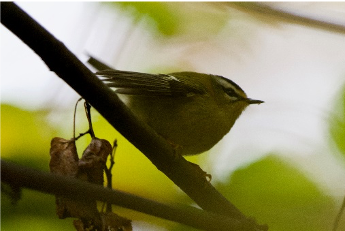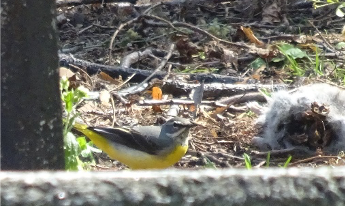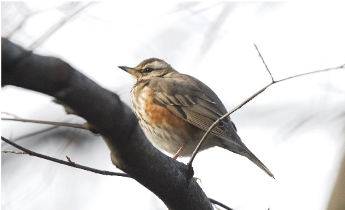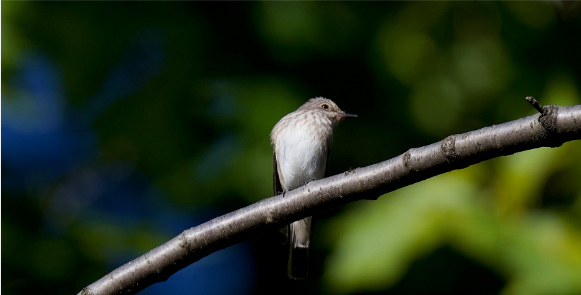The Bloomsbury Birdwalk: A recap and outlook (Part 1)
- UCL Conservation Society

- May 11, 2020
- 4 min read
Updated: Jul 10, 2020
By Lucas von Chamier
President of the UCL Nature and Conservation Society
Why birdwatch in Bloomsbury?
When you think about wildlife what usually comes to mind are scenes from the African savannah or the Alaskan mountains with iconic species like lions, elephants or grizzlies at centre stage. While certainly visually entertaining, this cinematic image represents only a tiny and (for most people in the ‘West’) extremely remote fraction of wildlife on Earth. Unfortunately, as most of humanity now lives in cities, this mental image of ‘wilderness’ can fuel a sense of disillusionment or disinterest in the local urban environment and habitats; where are our clouded leopards or emperor penguins, after all? On a large scale this promotes a vicious cycle, where we see our lives in cities as increasingly separate from nature and in turn make our cities less and less habitable for diverse species, including ourselves.
For me, the last few years living in London have transformed my perception of what ‘wild’ really means. And this is fundamentally linked to a little activity which a group of staff and students at UCL started in 2015, that is the Bloomsbury Birdwalk. As an enthusiastic birdwatcher since childhood, going birdwatching in central London initially seemed like a waste of time to me. Growing up in a big city, birdwatching for me meant getting up early and taking a long trip to a nature reserve or at least a big park. Enter central London, the opposite of what I learned to call ‘natural’: high levels of pollution and disturbance, developments, congested traffic and masses of people. What kind of birdlife can we expect to find here?
Of course, from a ‘classic’ birdwatching perspective, Bloomsbury does not strike anyone as a prime location, but over the years, the birds of Bloomsbury have rewarded me and many others at the Bloomsbury birdwalks with endless interesting observations, especially of bird behaviours. We have seen a kestrel hunt worms in Russell Square, have watched a group of Jays perform a strange dance ritual in the top of a tree, observed crows hunting down pigeons, herring gulls ripping apart pigeon carcasses and have watched bird parents raise their offspring from tiny naked goblins to scraggy looking fledglings.
These highlights aside, the day-to-day proximity to people has made the birds relaxed in the presence of keen birdwatchers which has also allowed us to observe many more subtle behavioural quirks of some of our birds up close. In this way, we have many times watched tiny goldcrests hover in mid-air beneath a leaf to catch an insect from its bottom surface, and robins being unsociable bastards for nine months and then turn into caring parents for three. We have marvelled at the intensity and volume of the wrens’ song but also simply enjoyed the emergence of the morning chorus as the days get longer in spring.

Herring Gull with Pigeon © Aeli Roberts
Gulls are adaptable scavengers which are near the top of the food chain in Bloomsbury. We regularly see two species, the lesser black backed and the herring gull.
This Herring Gull landed on a van near Tavistock Square, with the leftovers of a domestic pigeon. It’s not clear if the gull killed the pigeon itself or if it was just eating the carcass. No matter what, an interesting observation. Wildlife is carnage.

Worm hunting kestrel © Aeli Roberts
Kestrels are often thought to live on a strict diet of rodents. Hence, we were surprised to find this female kestrel hunting worms in Russell Square. As small rodents are less likely to be active in the daytime in the busy squares in Bloomsbury, this kestrel likely made do with what it could get on that day. It’s an example of how some birds may adapt to the special circumstances in the Bloomsbury area.
The species of Bloomsbury
In terms of species, it turns out, Bloomsbury also had more to offer than I ever expected. Several species use the squares as steppingstone during migration in spring and autumn. This has led to surprising encounters with spotted flycatchers, common whitethroats, firecrests , chiffchaffs, willow warblers, blackcaps and even a visit from a moorhen. Other birds which are resident sometimes see a sudden boost in numbers at different times of the year, like in early winter 2020 when dozens of carrion crows appeared as a flock wreaking havoc in Gordon Square for a few weeks, or the groups of woodpigeons that sometimes gather from September in Russell Square. In the winter, the squares of Bloomsbury become resting stops for thrushes from Northern Europe like redwings and mistle thrushes which like to feed on the berries of the yew trees in Russell Square or pick up worms in the wet grass.
Some of the rarer species of Bloomsbury – persistence can pay off! © Aeli Roberts
Top left: Firecrest in Gordon Square
Top right: Grey Wagtail at IoE
Middle left: Pied Wagtail at IoE
Middle right: Redwing in Russel Square
Bottom: Spotted Flycatcher in Gordon Square
A yearly fixture in our birdwatching calendar is recording which birds are breeding in Bloomsbury which is a good indication of how well this environment provides for these birds. So far, the confirmed breeding species of Bloomsbury are: blackbird; great tit; blue tit; long-tailed tit; wren; robin; goldcrest; dunnock (2020); mistle thrush (2020); goldfinch; starling; rose-ringed parakeet; woodpigeon; stock dove; magpie; carrion crow; kestrel and great spotted woodpecker, that’s 18 species! This does not include the true champion of the urban birds, the feral pigeon which we don’t include in our records, as it would be a gigantic effort to count these birds effectively, but credit where credit’s due.

Breeding season in Bloomsbury
Top Left: A female blackbird incubating her eggs in Russell Square (May 2020). Bottom left: A recently fledged robin chick in Russell Square (May 2020). Right: Three Mistle Thrush chicks in a nest in Russell Square (April 2020). 2020 was the first time we ever saw mistle thrushes breeding in our area. Another pair built a nest in Woburn Square with 2 chicks hatching.














Comments